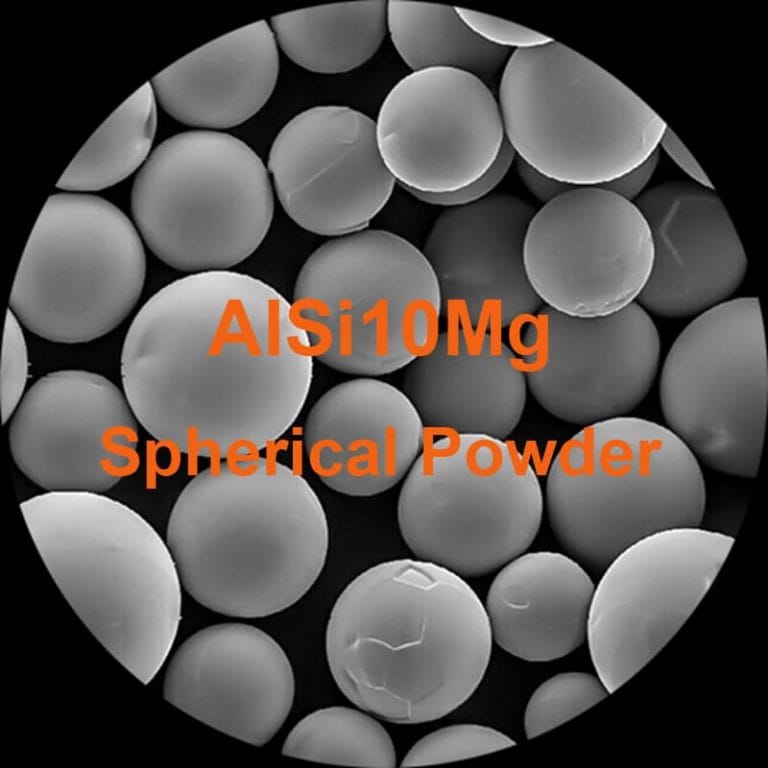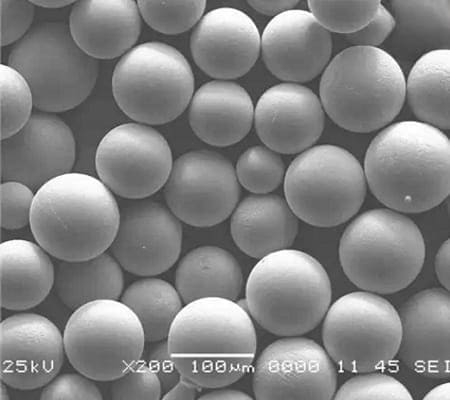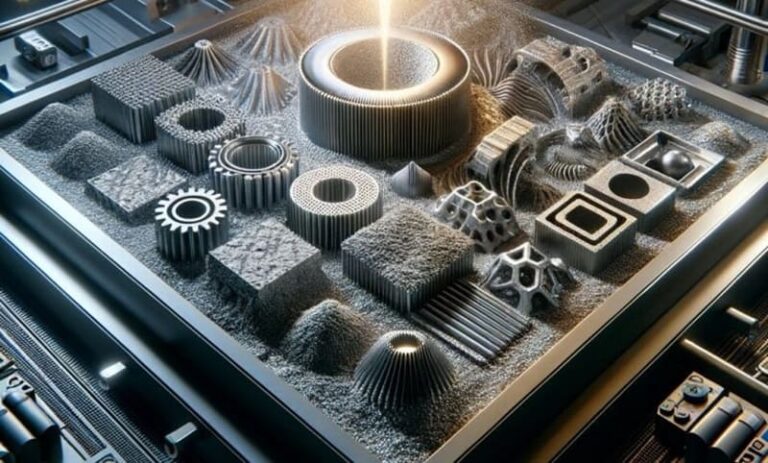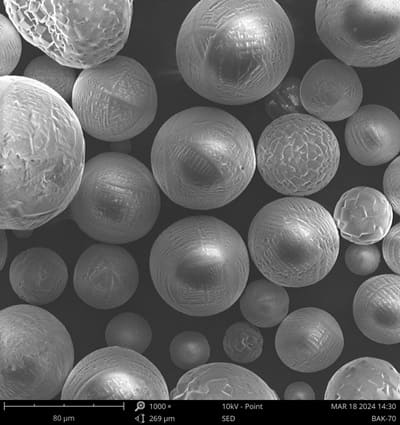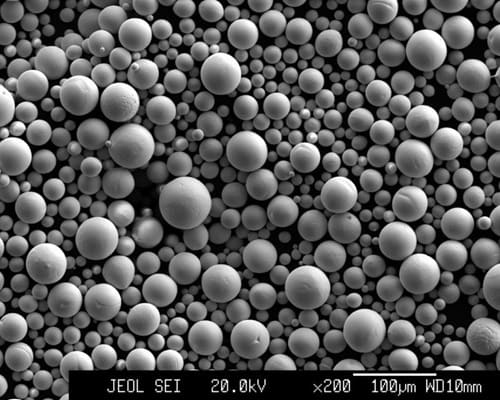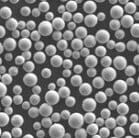Die Wahl des richtigen Stickstoff-Atomisierten Edelstahlpulvers für die moderne Fertigung
Nitrogen-atomized stainless steel powders have become essential in advanced manufacturing processes, from metal injection molding (MIM) and additive manufacturing (AM) to high-precision ceramic–metal hybrid parts. Their performance directly influences density, corrosion resistance, mechanical strength, and dimensional accuracy. As modern industries shift toward more demanding microstructures and higher production reliability, selecting the correct powder type is no longer optional—it is a core engineering decision.
This article provides a comprehensive, science-based guide for selecting the right nitrogen-atomised stainless steel powder, examining process fundamentals, performance data, stainless steel grades, application logic, and selection frameworks. All sections integrate structured tables and lists to support clear, actionable decision-making.
Unter Erweiterte Pulvertechnologie, we specialise in high-quality powder products, ensuring optimal performance for industrial and scientific applications.

What Makes Nitrogen-Atomized Stainless Steel Powder Different from Other Powders?
Nitrogen-atomized stainless steel powders differ significantly from water-atomized or mechanically produced powders. The controlled inert atmosphere, refined solidification mechanisms, and nitrogen-assisted alloy strengthening offer superior properties for precision manufacturing. Before examining grade selection, it is important to understand the underlying metallurgical logic.
These powders are widely used in additive manufacturing and ceramic–metal composite production because the spherical shape improves flowability and the low oxygen levels prevent brittleness. The table below summarizes key differences between nitrogen-atomized powders and conventional powders.
| Pulver Typ | Shape | Oxygen Level | Fließfähigkeit | Suitable Processes |
| Nitrogen-Atomized Stainless Steel Powder | Spherical (95%+) | Low (≤500 ppm) | Ausgezeichnet | AM, MIM, Hot Pressing |
| Water-Atomized Powder | Unregelmäßig | High (1000–3000 ppm) | Poor–Moderate | Press & Sinter |
| Mechanical / Milling Powder | Flaky or Angular | Sehr hoch | Poor | Limited industrial use |
Nitrogen-atomized stainless steel powders outperform alternative powder sources in almost every structural metric. Their spherical morphology ensures consistent packing density and minimizes defects during sintering or laser melting, which is essential for building ceramic-metal hybrids.
Entdecken Sie unser hochwertiges stainless steel alloy spherical powder Produkte.
What Are the Key Properties to Evaluate When Selecting Stainless Steel Powder?
Selecting stainless steel powder requires assessing structural, chemical, and processing-related properties. Each parameter directly affects powder-bed density, sintering behavior, and mechanical performance of the final component.
Below is a detailed list of the most critical evaluation metrics used in ceramic–metal composite engineering and AM optimization.
- Particle Size Distribution (PSD): A D50 between 15–53 μm is optimal for LPBF; 7–15 μm works best for MIM.
- Flowability: Hall flow rate ≤18 s/50 g ensures stable spreading and consistent layer density.
- Oxygen Content: Typically ≤500 ppm; medical-grade powders require ≤100 ppm.
- Sphericity: ≥95% ensures uniform melting and minimizes porosity.
- Purity and Inclusion Level: Non-metallic inclusions must be controlled below 0.01% to avoid brittleness.
These factors directly dictate whether a powder will produce dense, defect-free structures. For ceramic–metal integrated manufacturing, high sphericity and low oxidation are especially crucial to prevent interfacial delamination during thermal cycling.
How Do Nitrogen-Atomized Stainless Steel Powders Improve Manufacturing Processes?
Understanding the process-specific benefits helps establish why these powders are preferred for industrial and ceramic-related manufacturing.
The thermal stability and controlled nitrogen strengthening contribute to predictable shrinkage, superior mechanical integrity, and smoother surface finishes.
Process Advantages of Nitrogen-Atomized Stainless Steel Powders
| Advantage Category | Beschreibung |
| Flowability Optimization | Spherical shape increases powder-bed density and uniformity. |
| Low Oxygen Levels | Minimizes oxide inclusion formation; ideal for AM and ceramic bonding. |
| Nitrogen Strengthening | Solid-solution strengthening improves hardness and wear resistance. |
| Improved Cooling Rates | Fine microstructure enhances mechanical stability after sintering. |
These combined benefits reduce dimensional variation, improve part performance, and minimize defects—critical factors when working with ceramic-supported structures or hybrid assemblies requiring high precision.
Which Stainless Steel Powder Grades Are Most Common, and How Do They Compare?
Different stainless steel grades offer distinct corrosion resistance, magnetic behavior, and mechanical properties. Nitrogen-atomized versions of these grades provide enhanced purity and microstructure control.
The following table summarizes the most commonly used stainless steel powder grades in advanced manufacturing.
Comparison of Major Stainless Steel Powder Grades
| Klasse | Key Chemistry | Stärke | Korrosionsbeständigkeit | Typical Use Cases |
| 304L | Cr–Ni, Low Carbon | Mäßig | Gut | General AM, MIM, ceramic-metal frameworks |
| 316L | Cr–Ni–Mo | Hoch | Excellent (chlorides) | Medical, marine, chemical equipment |
| 400-Series (430, 410) | Ferritic / Martensitic | Moderate–High | Fair | Magnetic applications, auto parts |
| 17-4PH | Cr–Ni–Cu (PH) | Sehr hoch | Gut | Aerospace, high-strength components |
304L delivers a balance of performance and cost, whereas 316L dominates in highly corrosive environments. 17-4PH offers superior strength for demanding applications requiring dimensional stability and load resistance.
Ein individuelles Angebot anfordern für our powder stainless steel alloy spherical powder Produkte.
Why Is Nitrogen-Atomized 304L Stainless Steel Powder Popular in Manufacturing?
304L is among the most widely used stainless steel powders due to its balanced corrosion resistance, moderate cost, and broad processing compatibility.
The following list highlights why industries choose nitrogen-atomized 304L.
Core Advantages of Nitrogen-Atomized 304L Powder
- High purity combined with low carbon levels improves weldability.
- Spherical particles enhance spreading for LPBF and binder mixing for MIM.
- Corrosion resistance remains stable across neutral environments.
- Cost-effective option for general structural components and ceramic hybrid parts.
Industries working with ceramic–metal assemblies—such as sensors, fixtures, and precision supports—favor 304L because it offers predictable shrinkage during sintering, reducing bonding stress.
Why Choose 316L Nitrogen-Atomized Stainless Steel Powder for Harsh Environments?
316L is specifically designed for corrosive or chloride-rich conditions and is widely used in medical devices and marine equipment.
Below is a table summarizing its enhanced performance characteristics.
Key Performance Characteristics of Nitrogen-Atomized 316L
| Eigentum | Value / Behavior |
| Mo Content | 2–3% for superior pitting resistance |
| Oxygen Content | ≤100 ppm (medical grade) |
| Tensile Strength (SLM) | ~580 MPa |
| Dehnung | ~35% |
316L performs exceptionally well in ceramics-related processes because its low oxide content and ductile structure minimize thermal cracking during ceramic-to-metal joining.
What Role Do 400-Series Stainless Steel Powders Play in Modern Engineering?
Ferritic and martensitic 400-series stainless steels offer magnetic properties and lower cost than austenitic grades.
The following list highlights typical applications and limitations.
Characteristics of 400-Series Stainless Steel Powders
- Natural magnetic response supports sensors and magnetic fixtures.
- Lower nickel content reduces overall material cost.
- Suitable for dry, low-corrosion environments.
- Higher hardness options are available for wear applications.
400-series powders are commonly used where magnetic behavior is essential. Their limitations in chloride environments must be considered when manufacturing ceramic–metal hybrid structures exposed to moisture.
Why Is 17-4PH Nitrogen-Atomized Stainless Steel Powder Essential for High-Strength Components?
17-4PH is a precipitation-hardening stainless steel widely used for aerospace, precision machinery, and load-bearing structures.
The table below summarizes mechanical performance by heat-treatment state.
Mechanical Properties of 17-4PH in Different Conditions
| Heat-Treat Condition | Zugfestigkeit | Härte | Anmerkungen |
| Annealed | ~600 MPa | ~250 HV | Lower strength; easier machining |
| H900 | ~1300 MPa | ~40–44 HRC | Maximum strength |
| H1150 | ~930 MPa | ~28–32 HRC | Balanced corrosion resistance |
With nitrogen-atomized processing, 17-4PH achieves higher density and cleaner microstructures, making it suitable for ceramic-supported actuators, structural frames, and advanced engineering tools.
How Can Manufacturers Choose the Right Nitrogen-Atomized Stainless Steel Powder?
A structured selection framework ensures predictable performance and optimal cost management.
The list below outlines a recommended four-step engineering selection method.
Four-Step Stainless Steel Powder Selection Method
- Define service conditions: temperature, corrosion, mechanical load, magnetic requirement.
- Match powder grade to functional requirements: 316L for chlorides, 17-4PH for strength, 304L for general use.
- Verify powder specifications: sphericity, PSD, flow rate, and oxygen content.
- Evaluate production process compatibility: AM, MIM, laser cladding, or hot pressing.
Using these steps ensures the selected stainless steel powder meets both technical needs and long-term reliability targets for ceramic–metal integrated manufacturing.
FAQ
| Frage | Antwort |
| Is nitrogen-atomized powder better for AM? | Yes—its sphericity and low oxidation minimize defects. |
| Can stainless steel powder bond well with ceramics? | Yes, especially low-oxygen grades that reduce interfacial cracking. |
| Does powder oxygen level affect strength? | High oxygen increases brittleness; low oxygen improves ductility. |
| Are 400-series powders corrosion resistant? | Moderate—better for dry environments. |
| Which grade works best in harsh chemicals? | 316L due to Mo-enhanced pitting resistance. |
Schlussfolgerung
Nitrogen-atomized stainless steel powders offer a scientific combination of purity, sphericity, mechanical stability, and microstructural refinement that conventional powders cannot match. Understanding how different grades—304L, 316L, 400-series, and 17-4PH—perform across environments and processes allows manufacturers to optimize part integrity, reduce defects, and achieve higher production reliability.
For ceramic-related manufacturing, where thermal compatibility and interfacial stability are essential, nitrogen-atomized powders deliver the consistency required for next-generation engineering applications. By applying the structured selection framework, engineers and manufacturers can confidently choose the stainless steel powder grade that truly aligns with performance demands and long-term product goals.
Sie suchen ein hochwertiges Pulverprodukt? Kontaktieren Sie uns noch heute!


